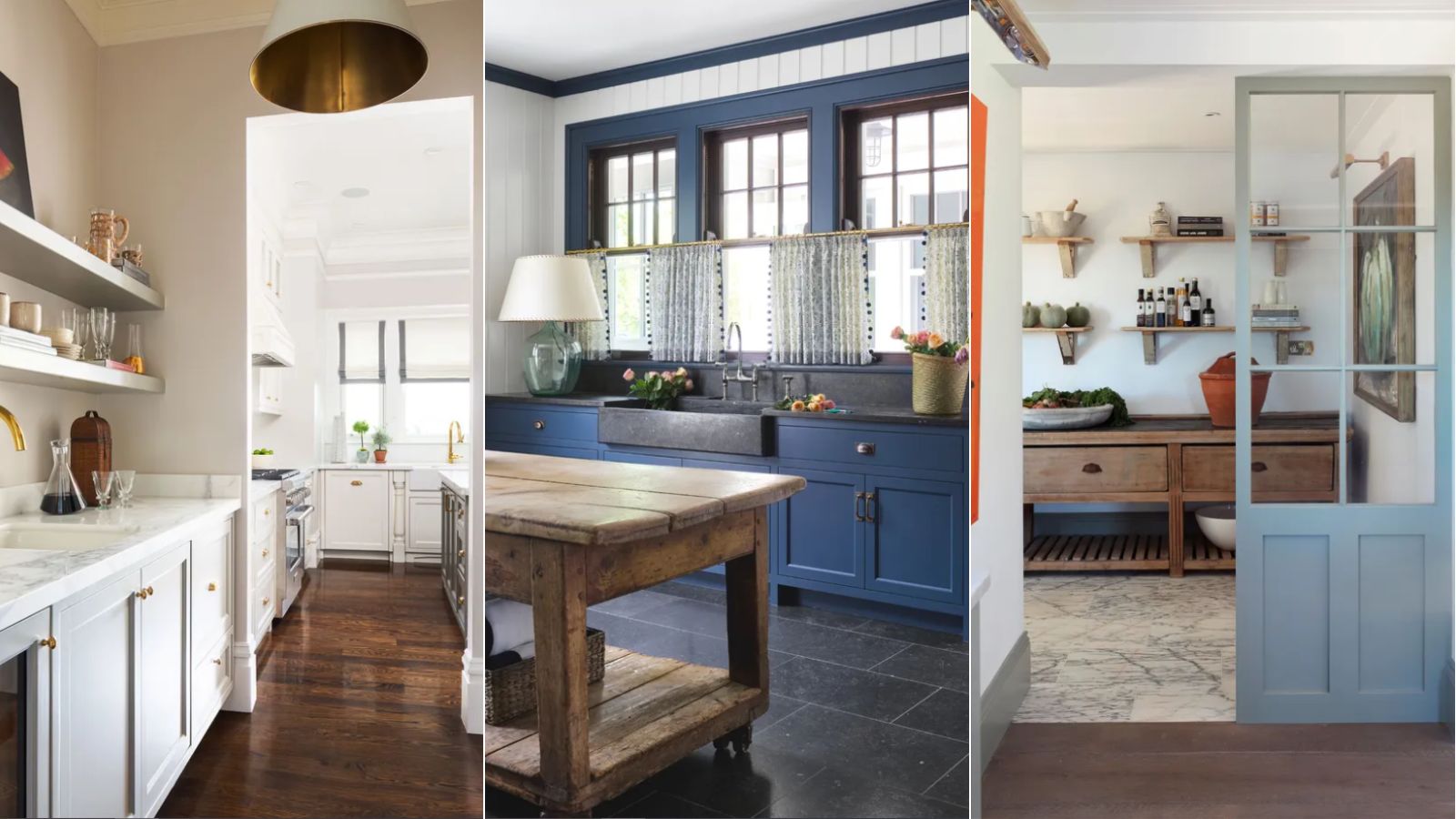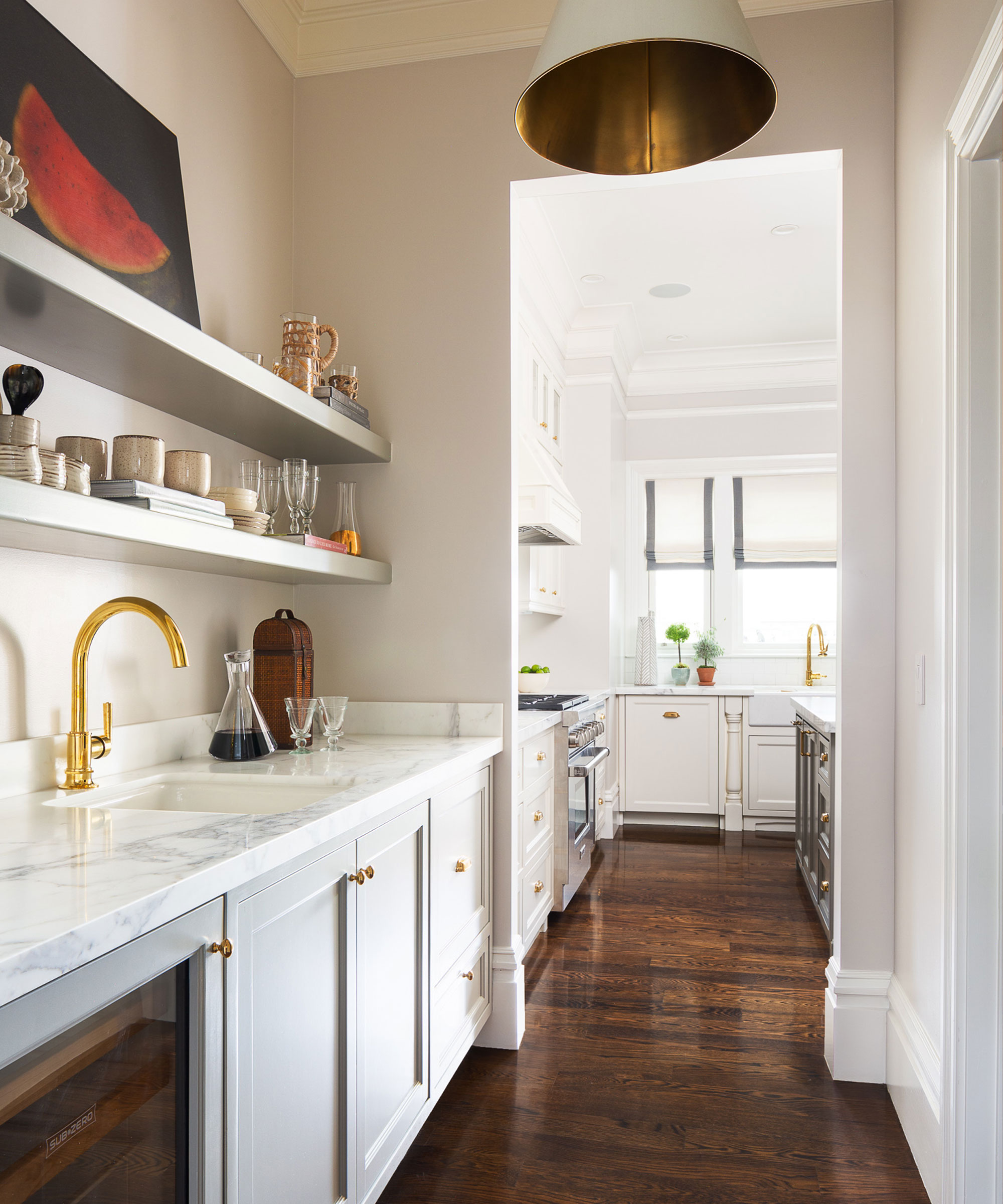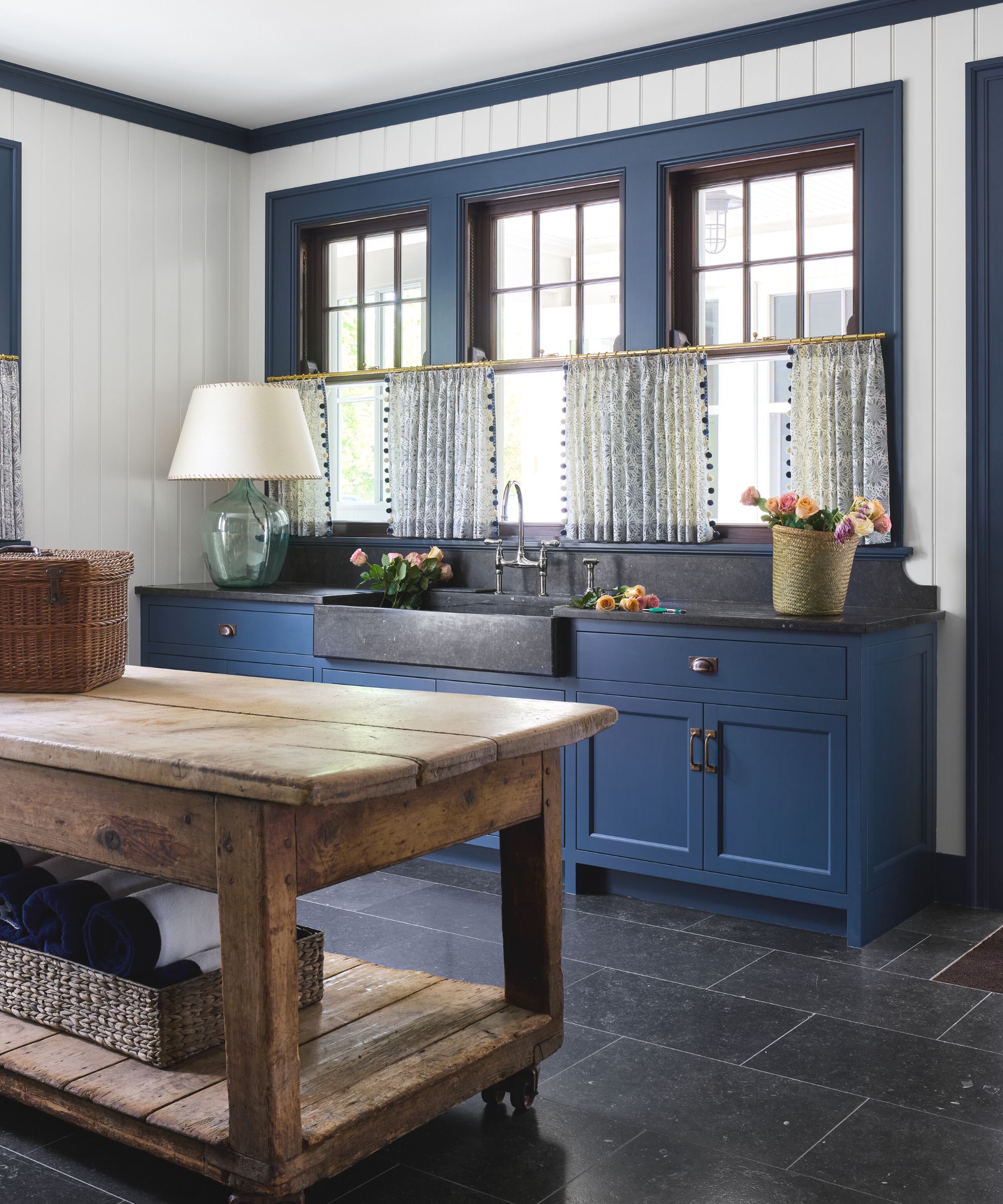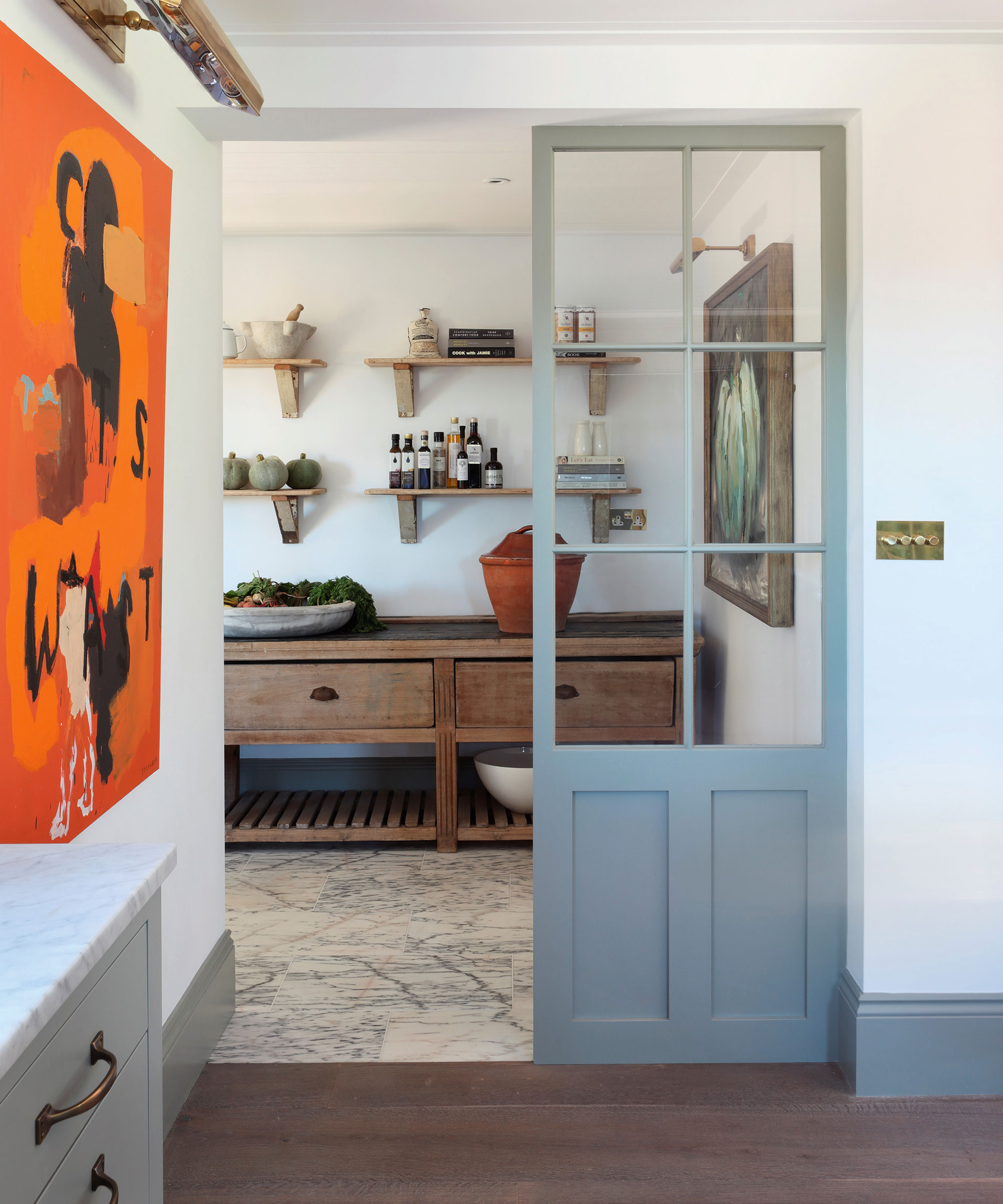
When it comes to kitchens, there's a lot to learn from old homes. Traditional kitchens – more specifically those found within grand, country British homes in the Victorian period – have iconic layouts and features that kitchen trends are referencing in 2024, for both practical and stylistic reasons.
Sculleries, butler's pantries, and utility rooms are all familiar terms that fall under the broader umbrella term of 'overflow kitchens'. Essentially, all of these rooms historically formed a key part of large homes, each serving as a practical space for cooking, cleaning, and other household jobs, although there are key differences between each of these rooms.
In previous articles, we've explored the design and use of butler's pantries and utility rooms, but here, we're taking a deep dive into the scullery kitchen. If you're intrigued by this old-school layout concept, keep reading to learn how it still serves a purpose in our homes today.
What is a scullery?

Sculleries are separate rooms most commonly located adjacent to a home's primary kitchen, designed for various household tasks. Historically, sculleries would have been used by the staff of wealthy homeowners, crucially being separated from the decadent living spaces upstairs.
Unlike a back kitchen which is essentially an extension of the kitchen to allow more space for cooking, sculleries are more commonly seen as a space for general household chores and extra kitchen storage space. For this reason, sculleries don't tend to have an oven or fully-fledged cooking set up, as a back kitchen would.
While employing kitchen staff is by and large a thing of the past, there's still plenty of reason for the scullery to exist today. You can interpret the purpose of a scullery to best suit your needs, but generally, today we see sculleries as spaces off the kitchen with storage space, extra worktops for certain food prep, and a sink for washing up and cleaning purposes.
If you love to entertain friends and family in your home, having this extra space to easily hide away dirty dishes can be incredibly appealing. In modern homes, separate dining rooms are less common, and so having somewhere to hide the unavoidable dinner prep chaos while you entertain in an open-plan kitchen is a major benefit.
Sculleries are also a great space to store extra dinnerware or serverware that you don't use every day, or less often reached for kitchen appliances that can take up precious kitchen countertop space.
Why are sculleries so popular right now?

In 2024, interior design trends continue to fully embrace design styles from the past. Particularly in kitchens, the heart of the home, we're seeing more and more of these spaces reflect styles such as farmhouse and traditional which are all about embracing an old-school look with classical design features.
The resurgence of the likes of sculleries goes hand in hand with these kitchen styles, allowing traditional design to lead the way. For those that have a farmhouse kitchen or traditional kitchen, sculleries are an obvious addition if space permits, allowing the main kitchen to reflect more of a cozy, relaxed look while the scullery can become the hardworking space.
Another reason why we're seeing a rise in secondary kitchen spaces such as sculleries, is because they can be a great space to channel creativity. Since kitchens are such a central part of the home and are more often than not costly to design, their design is often fairly understated to ensure a calm, liveable look and feel. In a scullery, you can afford to let creativity lead the way. Since it's not a space where people gather and it can be shut away from the main social space, opting for a splash of bold paint or an experimental wallpaper for example can be that perfect hint of playful decor in your home, without being overbearing.
Can you add a scullery to any kitchen?

The layout and design of a kitchen is something that is more often than not fairly permanent. Since remodeling a kitchen is a large undertaking, unless you're in the process of renovating, adding a scullery most likely isn't a quick fix.
But, if you're lucky enough to have a spare room in the vicinity of the kitchen, consider its use. If you already have a nearby laundry room or storage space, consider how you could add other elements, such as a sink and countertops to allow you to benefit from the practical advantages of a scullery.
Or, if you have a large kitchen, you could experiment with dedicating any redundant space to creating a scullery. This doesn't have to mean a completely separate closed-off room, you could have a less formal divide or open doorway connecting it to the kitchen as shown above.
Looking for more design inspiration for your kitchen? This deVOL kitchen guide is filled with inspiration to help you on your way.
Whether you're considering the addition of a scullery to your kitchen remodel or it's simply something you dream of having one day, sculleries boast a wide range of benefits. If you are in the position to add a scullery to your space, make sure you fully embrace its decor potential and channel a bold look for a modern take on this historical kitchen concept.







